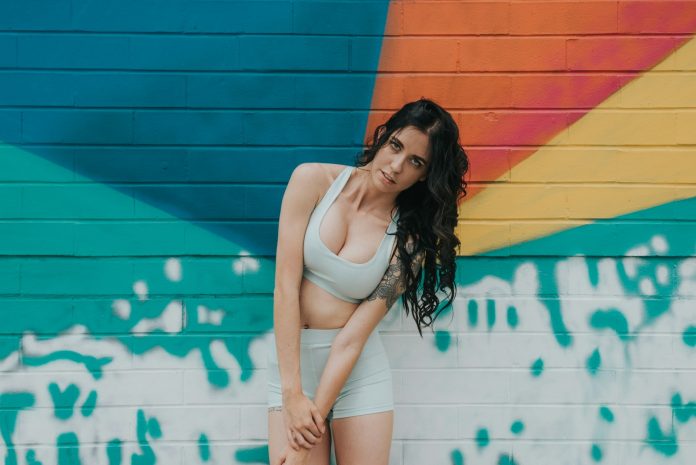In the world of fitness, performance and recovery are two crucial factors that dictate how effectively we train and how quickly we bounce back from intense exercise. Over the past decade, one particular category of workout gear has gained massive popularity for its ability to support both: compression wear. Once seen as a niche product, compression wear has now become a staple for athletes, fitness enthusiasts, and even casual gym-goers. The promise of improved circulation, reduced muscle fatigue, and faster recovery makes compression wear highly appealing. But with so many options available on the market today, it can be overwhelming to know which type of compression wear is best suited for your workout goals. In this essay, we’ll explore the benefits of compression wear, how it works, and the best compression gear options to enhance your performance and recovery during workouts.
What is Compression Wear?
Compression wear refers to tight-fitting garments that apply controlled pressure to the body, especially to specific muscle groups. These garments are designed to improve blood circulation and reduce muscle vibration, which can lead to less muscle fatigue and soreness. Compression clothing is often made from elastic fabrics such as spandex or Lycra, which have the ability to stretch while providing a firm, snug fit.
The theory behind compression wear is relatively simple: by applying pressure to the muscles and joints, it can enhance the flow of oxygenated blood to the muscles, remove waste products like lactic acid, and ultimately improve overall muscle efficiency. Compression wear is also thought to help reduce swelling and inflammation by supporting the lymphatic system.
While compression garments are often associated with recovery and injury prevention, they can also be worn during exercise to boost performance and endurance. The benefits of compression wear are not just theoretical; multiple studies have shown that wearing compression clothing can have a positive impact on both workout performance and post-workout recovery.
Benefits of Compression Wear for Workouts
Before diving into specific compression wear options, it’s important to understand the tangible benefits that compression garments offer during a workout.
Improved Circulation: One of the most well-known benefits of compression wear is its ability to enhance blood flow. By applying controlled pressure to the muscles, compression garments encourage blood to circulate more efficiently, delivering oxygen to the muscles and removing waste products like lactic acid. This improvement in circulation can help reduce muscle fatigue during exercise and speed up recovery afterward.
Reduced Muscle Vibration: During high-impact activities, such as running or weightlifting, muscles experience a lot of vibration. Compression garments help stabilize the muscles and reduce the amount of muscle oscillation, which can minimize muscle damage and fatigue. This is particularly beneficial for athletes who perform high-intensity exercises or long-duration endurance activities.
Enhanced Performance: While the primary use of compression wear is recovery, it can also support performance during exercise. Compression clothing provides a sense of stability and support to the muscles, allowing athletes to maintain optimal performance. The snug fit may also increase proprioception, or the awareness of body position, which can improve overall movement efficiency.
Reduced Swelling and Inflammation: Compression garments are effective at preventing and reducing swelling, especially after an intense workout. By helping to circulate fluids and waste products away from the muscles, compression wear can minimize post-workout swelling and reduce inflammation. This can help to prevent injuries and support faster recovery.
Injury Prevention and Protection: Compression wear can also serve as a preventive measure against injuries. The pressure provided by compression garments supports the muscles and joints, which can help reduce the risk of strains, sprains, or overuse injuries. Additionally, compression gear can help protect against external factors such as chafing or skin irritation, which is particularly important for long-distance runners or cyclists.
Types of Compression Wear for a Better Workout
There are various types of compression garments designed for different workout needs. Whether you’re focusing on a specific muscle group, looking to enhance your overall performance, or aiming for quicker recovery, there’s a compression garment that fits your needs. Let’s take a closer look at some of the most popular compression wear options.
- Compression Socks
Compression socks are one of the most popular and widely used types of compression wear, and for good reason. They are particularly effective at enhancing circulation in the lower legs, reducing muscle fatigue, and preventing swelling in the calves, ankles, and feet. Compression socks are especially beneficial for runners, cyclists, or anyone engaging in activities that involve prolonged periods of standing or high-impact movement.
Compression socks come in various lengths, including knee-high, thigh-high, and ankle-length options. For optimal benefit, the socks should provide graduated compression, meaning they are tighter at the ankle and gradually loosen toward the calf. This design helps to support the flow of blood from the feet to the heart, minimizing the risk of swelling and improving circulation during long workouts.
Many athletes wear compression socks during exercise, while others use them post-workout to aid in recovery. The socks help reduce muscle soreness and swelling after intense training sessions, allowing athletes to recover faster and return to training more quickly.
- Compression Shorts
Compression shorts are another popular choice for improving workout performance and recovery. These garments are designed to apply targeted pressure to the thighs, hips, and groin area, providing support during high-intensity exercises such as squats, lunges, and sprints. By reducing muscle oscillation, compression shorts help minimize fatigue and the risk of injury during explosive movements.
Compression shorts can be worn alone or as a base layer underneath workout clothes. They are especially beneficial for athletes engaging in sports like running, basketball, soccer, and cycling, where the lower body undergoes a lot of impact. The added pressure from the shorts helps stabilize the muscles and improve muscle function, leading to enhanced performance.
Additionally, compression shorts can help to reduce chafing, which is common during long workouts or intense physical activity. They also provide support for the muscles and joints in the groin and thigh areas, which are often vulnerable to strains and overuse injuries.
- Compression Sleeves
Compression sleeves are designed for specific areas of the body, such as the arms, calves, or knees. These garments provide targeted compression to help reduce swelling, muscle soreness, and fatigue. For example, compression arm sleeves can be worn to support the forearms, elbows, and shoulders, while calf sleeves can be worn during running or cycling to prevent cramping and improve circulation.
Compression sleeves are ideal for individuals who may not want to wear full-length compression garments but still want to experience the benefits of compression in a specific area. They can be worn during exercise for support or after a workout to aid in recovery.
- Compression Tops and Tights
Compression tops and tights are full-body compression garments that provide support for the upper and lower body simultaneously. These garments are often worn by athletes during intense workouts or long endurance activities, such as marathon running, triathlons, or weightlifting. Compression tights support the muscles in the legs and hips, while compression tops offer stability for the upper body, including the shoulders, back, and chest.
Compression tops and tights work by promoting better circulation throughout the entire body, enhancing oxygen delivery to the muscles and improving endurance. These garments are particularly useful for athletes who want full-body support without restricting movement. They also help to reduce muscle fatigue and improve posture during exercise, ensuring that athletes can maintain proper form and reduce the risk of injury.
How to Choose the Right Compression Wear for Your Workout
Choosing the right compression wear depends on your workout goals, the type of activity you do, and your personal preferences. Here are a few factors to consider when selecting compression gear:
Fit: Compression garments should fit snugly but not feel restrictive. The goal is to provide consistent pressure without cutting off circulation. Make sure to follow the manufacturer’s size guide to ensure a proper fit.
Material: Look for compression wear made from breathable, moisture-wicking fabrics, such as spandex, Lycra, or nylon. These materials will help keep you cool and dry during your workout.
Compression Level: Compression garments come in varying levels of pressure, from light to firm. If you’re new to compression wear, start with a lighter compression level and gradually increase as you become accustomed to the feeling.
Activity Type: Consider the type of activity you’ll be engaging in. For long-distance runners, compression socks or sleeves may be the best option. For those doing strength training or high-intensity interval training (HIIT), compression shorts or tights may offer the best support.



